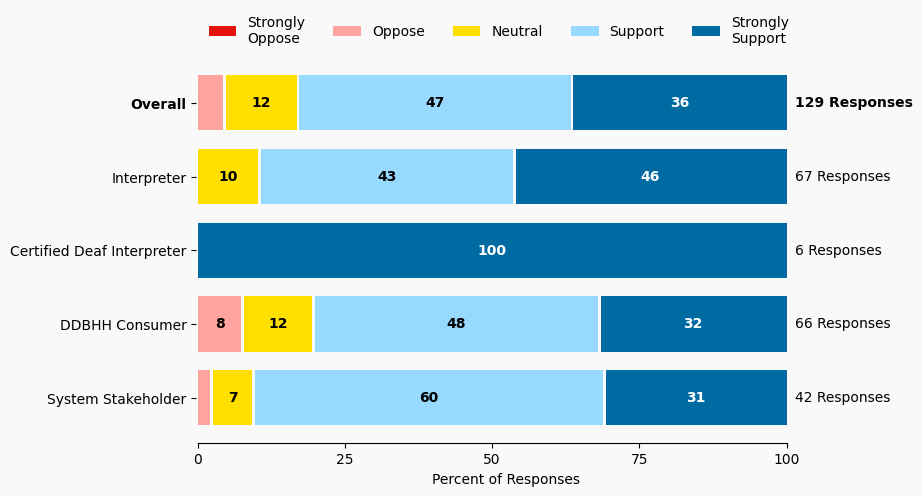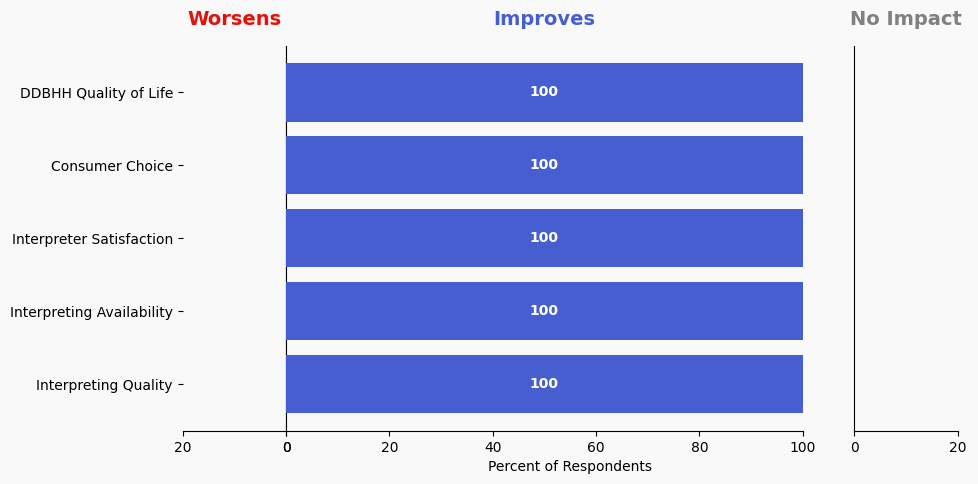42 Explore Interest in Community of Practice for CDIs in K12 Settings
Issue: Some DDBHH students require interpreting skills that can only be provided by CDIs. Currently, there are challenges with school districts hiring CDIs despite legislation in place to provide for CDIs in classrooms and the funding reimbursement to school districts for CDI services.
Proposed Solution: Starting with a presentation at the Collaborative Education Conference (CEC), raise awareness of the benefits of CDIs in the classroom. From this presentation, gauge interest in a community of practice and/or a working group to advance having CDIs in the classroom for students who could benefit from CDI services.
Expected outcome: DDBHH students would have better educational outcomes; therefore, allowing for becoming better educated citizens with higher employability. Improved support and job satisfaction for K12 interpreters and increased quality of K12 interpreting services.
Who is impacted: DDBHH children in mainstream educational settings, educational interpreters
Timeline: 6 months

Summary of Support Image Description
The stacked bar charts show how respondents rated their level of support and the total number of responses. The percentage for the five support levels is shown from left to right: Strongly Oppose (Dark Red), Oppose (Light Red), Neutral (Yellow), Support (Light Blue), and Strongly Support (Dark Blue).
Respondents may identify with multiple subgroups. The overall level of support is:
Overall
Strongly Oppose: 0%
Oppose: 5%
Neutral: 12%
Support: 47%
Strongly Support: 36%
Click to see the detailed image description for each subgroup.
Interpreter
Strongly Oppose: 0%
Oppose: 0%
Neutral: 10%
Support: 43%
Strongly Support: 46%
Certified Deaf Interpreter
Strongly Oppose: 0%
Oppose: 0%
Neutral: 0%
Support: 0%
Strongly Support: 100%
DDBHH Consumer
Strongly Oppose: 0%
Oppose: 8%
Neutral: 12%
Support: 48%
Strongly Support: 32%
System Stakeholder
Strongly Oppose: 0%
Oppose: 2%
Neutral: 7%
Support: 60%
Strongly Support: 31%
Overview of Respondents Opting for In-Depth Solution Analysis
After indicating their support level, 2% of the 129 respondents opted in to further assess whether the solution would worsen or improve on five metrics. Of the opt-in reviewers (3 respondents), 100% supported the solution, 0% were neutral on the solution, and 0% opposed the solution.
The remaining 126 respondents did not opt in to further assess the solution. Of these people, 82% support the solution, 12% were neutral on the solution, and 4% opposed the solution.
Reviewer Evaluation of Solution Effectiveness

Solution Effectiveness Image Description
The stacked bar charts show how respondents assessed the effectiveness of this solution based on five metrics. For each metric, the percentage of respondents is shown from left to right: Worsens (Red), Improves (Blue), No Impact (Gray).
DDBHH Quality of Life
Makes It Worse 0%
Makes It Better 100%
No Impact 0%
Interpreter Satisfaction
Makes It Worse 0%
Makes It Better 100%
No Impact 0%
Consumer Choice
Makes It Worse 0%
Makes It Better 100%
No Impact 0%
Interpreting Availability
Makes It Worse 0%
Makes It Better 100%
No Impact 0%
Interpreting Quality
Makes It Worse 0%
Makes It Better 100%
No Impact 0%
Reviewer Feedback and Insights
Interpreter
Comments from Interpreters emphasize the importance of collaboration with the Individualized Education Program (IEP) team to ensure that CDIs are integrated effectively in K12 settings. One comment highlights current pushback and resistance from school districts to this solution.
Deaf, DeafBlind, Hard of Hearing
No comments were submitted.
System Stakeholder
Comments from System stakeholders highlight a lack of understanding among IEP team members about the role of CDIs in classrooms.
PREVIOUS SOLUTION
41 Recruit to Interpreter Training Programs via Signing Community Housing
Issue: Limited opportunities for prospective interpreters to gain an immersion experience.
NEXT SOLUTION
43 Revise K12 Educational Interpreters’ Mentor Program
Issue: Some interpreters in K12 settings report feeling the need for more support as they are starting their careers. Interpreters in K12 settings are often working on waivers as they have not met the professional standards for their positions. Limited opportunities for interaction with DDBHH adults to improve language skills.
Leave a Reply